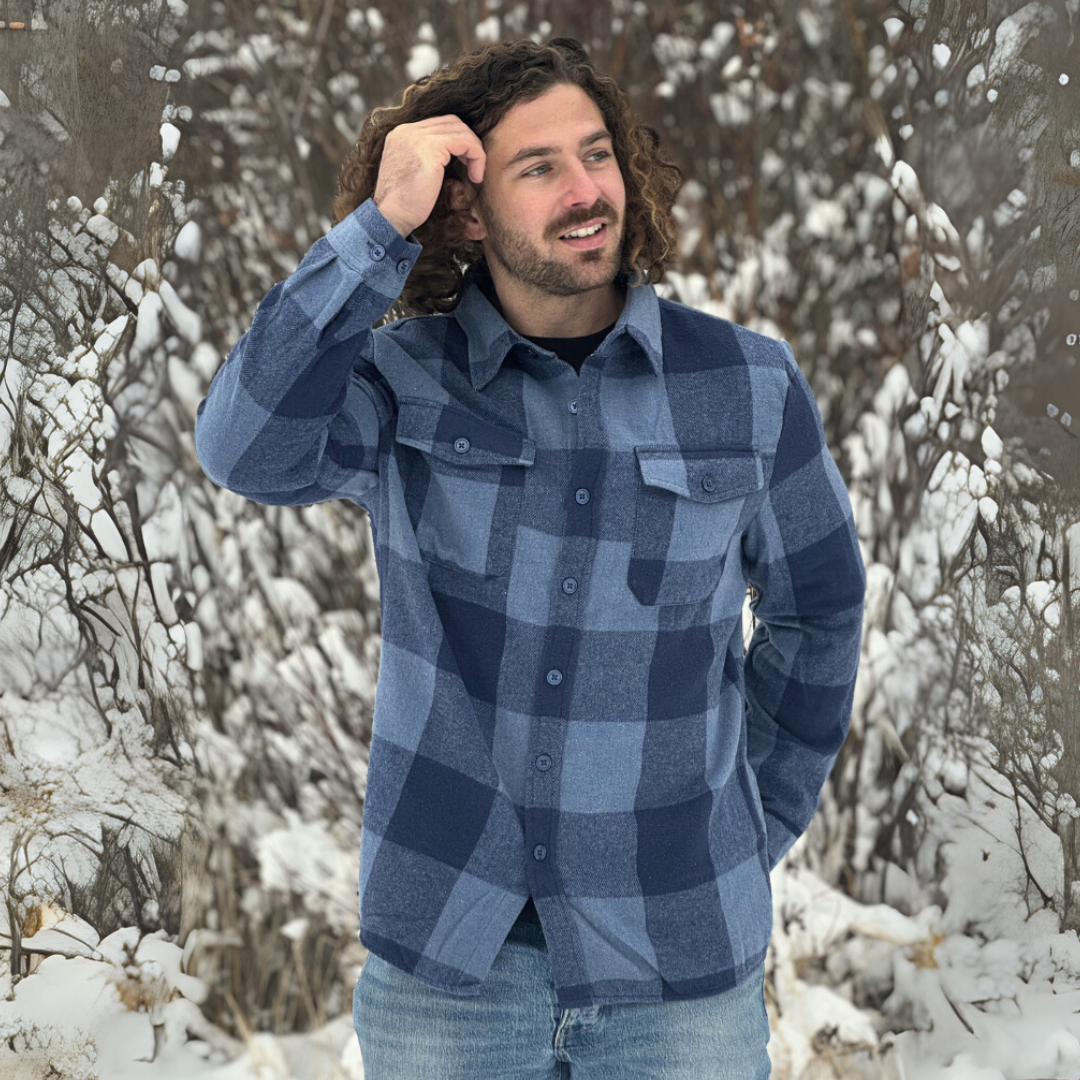So, what is flannel?
More often than not, flannel is confused and mistakenly used interchangeably with terms “plaid” or “tartan”. These are actually patterns that can be displayed on the flannel fabric, but are by no means exclusive to it.
This confusion is understandable. As you’ll soon learn, the rise of the plaid pattern in the 1990s with the grunge movement might have something to do with this misconception. Popularities such as Nirvana’s Kurt Cobain would often be seen wearing plaid flannel shirts. The rise of the plaid pattern on a flannel shirt definitely leaves room for the terms to be misconstrued.
Remember, plaid is a pattern, not a fabric itself.
Further, flannel is a soft, loosely woven and slightly napped fabric used for a wide range of garments.
Originally made from carded wool or worsted yarn, flannel is now made from wool, cotton, or synthetic fiber. It features either a plain or twill weave usually brushed in either a single or double “nap” (a technique using a metal brush to rub the fabric, raising fine fibers for an even softer feel).
Flannel is commonly used to make tartan clothing, blankets, bed sheets, and sleepwear. The fabric is well known for its extreme softness and warmth, which is a result of the loosely spun yarn.
Did you know?
Flannel has even been composed of fibres from the Scots pine. “Vegetable flannel” was invented by Léopold Lairitz in Germany in the 1800’s!
History of Flannel Shirts
While the origin of the word “Flannel” is uncertain, it is most likely that it came from the Welsh word gwlanen, meaning “woolen cloth”. Due to the differentiation in sound, some suggest that it actually originated from the Old French word flaine “a kind of coarse wool.”
The fabric itself can be traced back to 17th century Wales. Textile workers in the late 1600s began using a surplus of sheep’s wool, using a process called “carding” to disentangle and soften yarns. This allowed for a softer fabric that still retained the toughness of wool. It wasn’t long thereafter that Welsh textile mills were distributing flannel shirts to be used by Welsh farmers, and soon thereafter the entire working class. This new fabric became a popular product for fighting the country’s cold, wet and windy climate.

(photo credit: @igorovsyannykov)
Textile traders soon brought the fabric over to England and France. More advanced textile mills were able to produce materials quicker, and at a fraction of the cost. This meant mass-produced flannels that were becoming popular among the working class for their tough, warm qualities.
Then, in 1889, Hamilton Carhartt founded his namesake company. His clothing was made specifically for the working class. His idea was to provide them with a top quality product, which would meet his standard of excellence he wanted his garments to reflect. Flannel fit the bill; and Carhartt can be largely credited for popularizing the fabric in the United States.
The rise of flannel wasn’t only popular amongst the working class. The United States Army issued soldiers flannel shirts during both World Wars, as an added layer of warmth. Rather than using it for an additional layer of warmth, soldiers began wearing it as a casual wear. Featuring a cargo style design for utility purposes, the extra pockets starting gaining popularity among outdoors-centric individuals. Softness and comfort with added functionality allowed for the once working class attire to expand interest towards everyday outdoorsmen over the decades that followed.
It wasn’t until the rise of the Grunge movement that plaid flannel would really take off. Bands like Nirvana and Pearl Jam embraced the style and flannel was repurposed as a fashion statement among teenagers and young adults in support of the music and culture that was rising during that time. Soon, plaid flannel shirts would become a popular trend for those seeking self-expression.
With the rise of Grunge, flannel gained popularity into a more mainstream audience. The shirts worn at the time were rather loose and sloppy, but they would eventually change. Enter the early 2000’s, where more sophisticated images of the flannel shirt would be seen with a more tailored fit. The Americana-centric wardrobe pieced flannel shirts with raw denim and thick wool cardigans. The “hipster” culture began to rise and flannel was largely embraced as a favourite style piece.
Today flannel is one of the most versatile in terms of style and usability. No longer specific to the working class, a fashion statement, or a just trend, but largely embraced by everyone. Whether you’re looking at slipping into a warm pair of flannel pyjamas, or heading out in one of our mens flannel shirts; we think you’ll agree: flannel is one of, if not the best, fabric you can wear!
Remember to visit our collections and pick yourself out one of our beautiful Rocky Mountain Flannels!



2 comments
I always have to smile when the popularity of flannel is attributed to Kurt Cobain. I’m sure he made it more popular – but it was there all along. We had plaid cotton flannel shirts as kids in the ‘70s, as they were popular among outdoorsmen in the Northeast US. I assume that’s what Cobain grew up with in the PNW as well. I like to say, I was grunge before grunge was cool!
Very interesting to read “The origin of flannel .” The warmth is amazing
Leave a comment